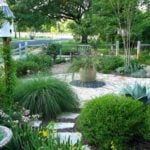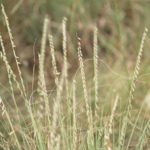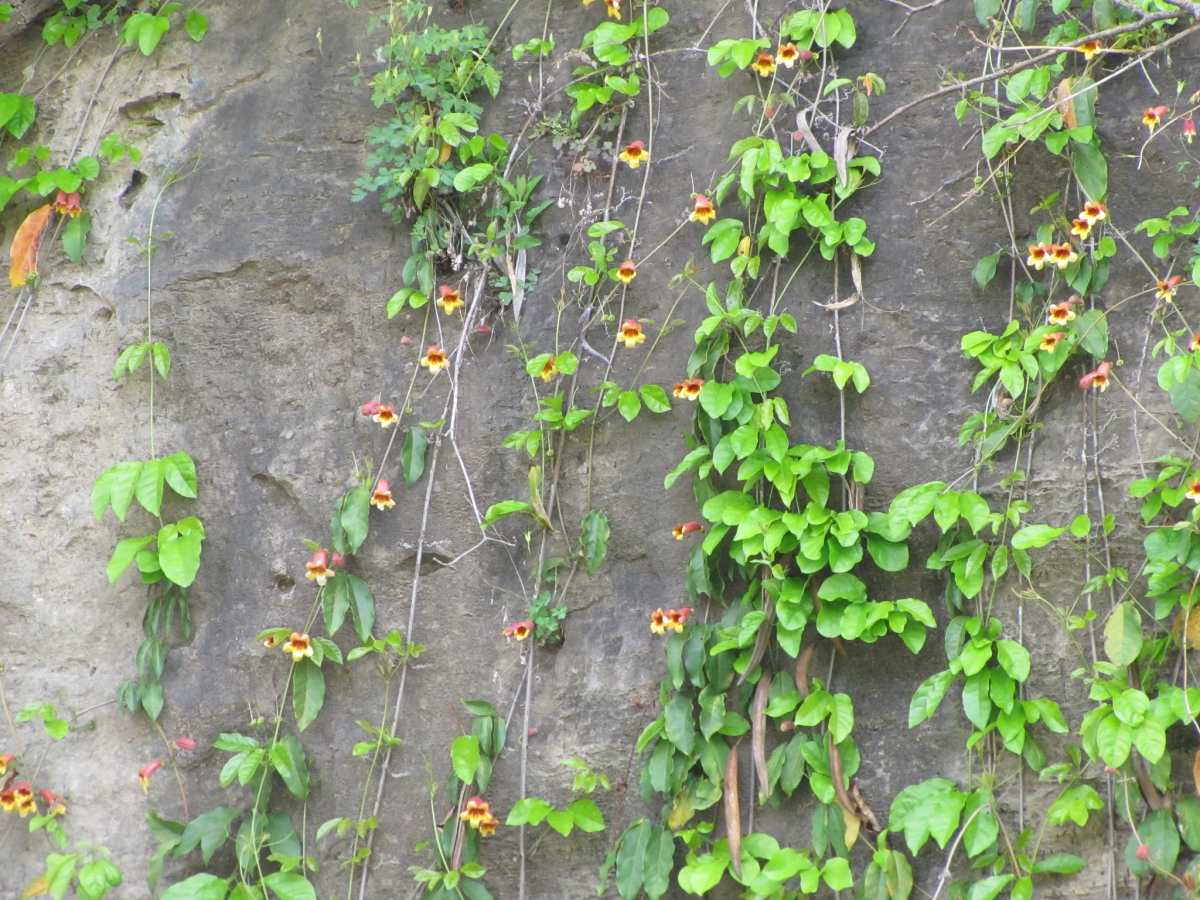
The best native plants for landscaping in Mississippi include edibles like American beautyberry, aquatic plants like swamp sunflower, and flowers like crossvine. There are also a number of hardy trees to choose from.
Native plants are good for your landscape because, among other things, they don’t need much fertilizer, pesticides, or supplemental water, making them easier to maintain and better for the environment. We’ll explore the best Mississippi native plants for landscaping in this article.
What is a Native Plant?
The National Wildlife Foundation describes a native plant as one that has “occurred naturally in a particular region, ecosystem, or habitat without human introduction.” They can be trees, shrubs, flowers, and grasses, and are either terrestrial or aquatic.
Native plants offer many benefits to your landscape:
- Low Maintenance: They’re adapted to the local environment, so they don’t require much maintenance.
- They save water: Once established, all they need is regular rainfall.
- No need for pesticides: They have their own defenses against pests and diseases, so you don’t need to use pesticides.
- They attract wildlife: Native plants provide food and shelter for native wildlife like birds and butterflies. Pollinators like flowering plants, while the fruits and seeds native plants produce gives wildlife a source of food.
Edible Native Plants
American Beautyberry (Callicarpa americana)
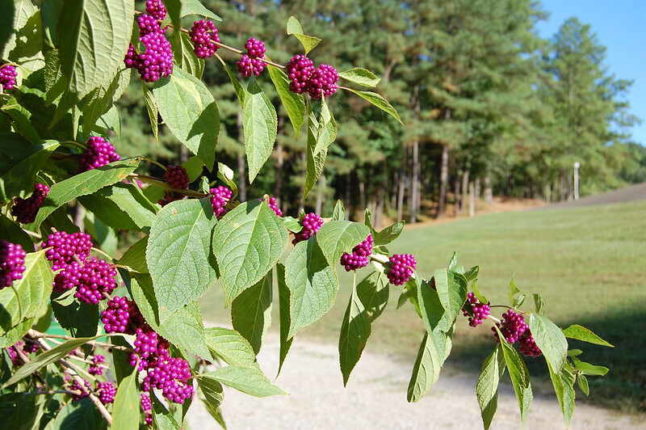
American beautyberry’s most striking feature is the glossy purple berries that appear in late summer to early fall. These berries are a valuable food source for deer and birds, and although they’re edible to humans, they have very little flavor.
American beautyberry is pest-, disease-, and fire-resistant. It can survive in sun and partial shade, but it doesn’t like deep shade.
Plant type: Shrub
USDA Hardiness Zone: 7-11
Sun: Full sun to partial shade
Soil: Loam, Sand
Duration: Deciduous perennial
Fragrance: Citrus
Bloom time: Summer
Water needs: Low (one inch per week)
Mature height: 4-8 feet
American Black Elderberry (Sambucus canadensis)
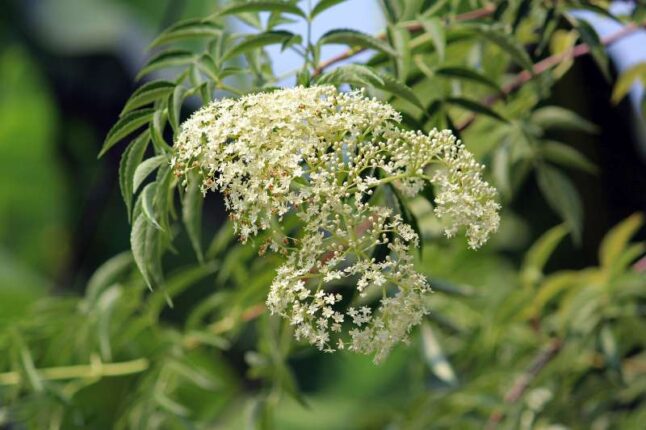
American black elderberry is usually found in a moist habitat with full or light shade. Its fragrant small white flowers bloom in spring and summer, while its fruits ripen in August and September for many species of birds and mammals to eat.
The elderberry’s flowers are used to make wine and the berries are used to make pies, jams, and preserves.
Plant type: Shrub
USDA Hardiness Zone: 4a-10b
Sun: Full sun, part shade
Soil: Tolerates a wide variety of wet to dry soils but prefers rich, moist, slightly acid soil.
Duration: Perennial
Fragrance: Sweet
Bloom time (or season of interest, if it doesn’t bloom): May through July
Water needs: Medium
Mature height: 5-8 feet
Potential hazards: Raw fruit is inedible to people
Maintenance: Regular pruning to remove suckers from base of plant
Aquatic Native Plants
Swamp Sunflower (Helianthus angustifolius)
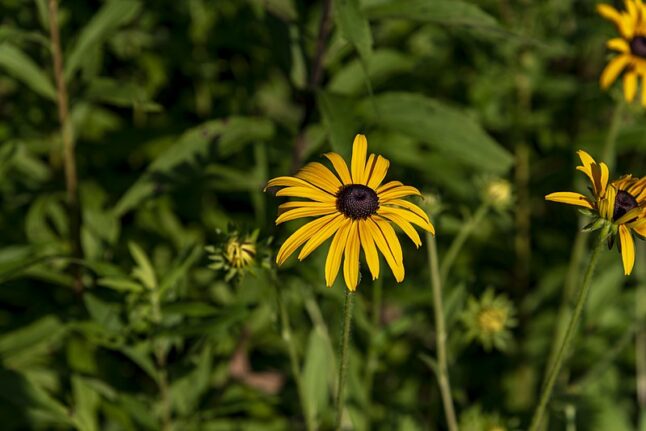
From mid-summer into fall, the swamp sunflower sprouts showy yellow flowers with purplish-brown disks in the center. This plant is a favorite among pollinators and songbirds.
Swamp sunflower likes moist to wet acidic sandy soils, but can grow on drier soils with enough moisture. Caterpillars and beetles chew on its foliage but don’t do enough damage to warrant pest management.
Plant Type: Wildflower
USDA Hardiness Zone: 5-10
Sun: Full or partial sun
Soil: Clay, loamy, or sandy soil
Duration: Perennial
Fragrance: Delicate, vegetal
Bloom Time: Late summer to early fall
Water Needs: Moderate to high
Mature Height: 5-8 ft.
Potential Hazards: None
Maintenance Needs: Low
Bald Cypress (Taxodium distichum)
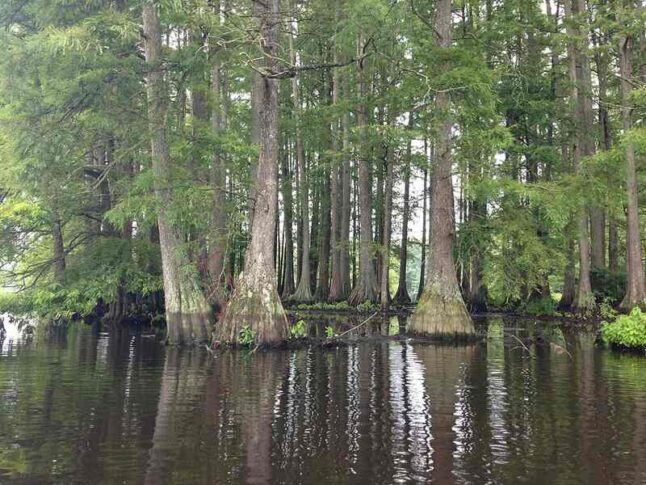
An iconic Mississippi tree, the bald cypress has thin, feather-like light green leaves tightly arranged on both sides of its branches. In October, it sprouts cones up to one inch in diameter. Cones from male trees are pollen-bearing, while cones from female trees are seed-bearing.
Bald cypress can improve the aesthetics of wetlands and ponds. Many birds use them for roosting and nesting, especially bald eagles and ospreys.
Hardiness zones: 4-10
Mature size: 50-100 feet tall and 3-6 feet wide
Foliage: Deciduous
Bloom time: March through April
Sunlight needs: Full sun or partial shade
Soil preferences: Grows best in moist soils and even tolerates standing water but also tolerates somewhat dry soil
Water needs: Somewhat drought-tolerant
Potential hazards: No hazards
Mississippi Flowers
Tickseed (Coreopsis)
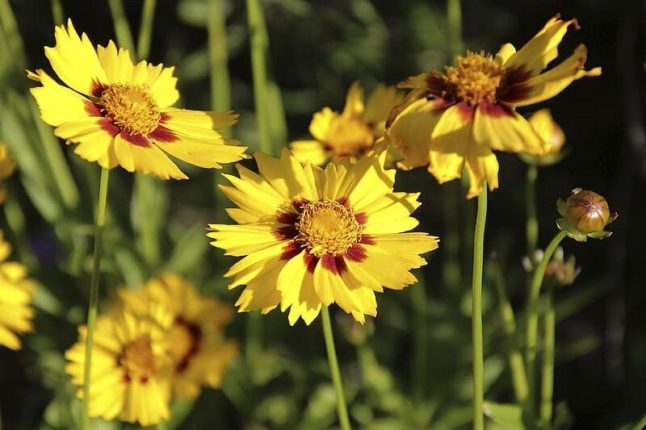
Tickseed adds a splash of yellow to your garden. Its name comes from its round seeds, which resemble ticks. Birds and other wildlife love these seeds.
Tickseed doesn’t need much care when grown in their preferred environment. All they need is full sun and good soil drainage.
Plant type: Flowering annual or perennial
USDA Hardiness Zone: 3-10
Sun: Full sun
Soil: Chalk, loam, sand
Duration: Annual, perennial
Fragrance: Foliage has anise-like scent
Bloom time: June through September
Water needs: Low, average
Mature height: 6 inches to 4 feet
Maintenance: Low
Crossvine (Bignonia capreolata)
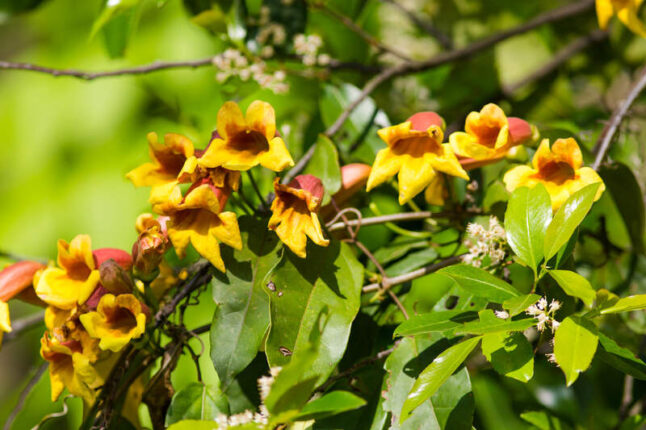
Crossvine is a tropical-looking plant that uses its tendrils to wrap around stems and bark as it climbs trees and fences. Its foliage starts off green, but it turns reddish-purple in the fall. Fragrant orange-red flowers bloom in spring.
It gets its name from a marking on its stem resembling the Greek cross.
Plant type: Vine
USDA Hardiness Zone: 6-9
Sun: Full sun, partial shade
Soil: Sandy, loamy, clay
Duration: Perennial
Fragrance: Mocha
Bloom time: Mid-spring to late summer
Water needs: Low to medium
Mature height: Climbs up to 50 feet
Maintenance: Prune to keep the desired shape
Mississippi Native Trees
Red Maple (Acer rubrum)
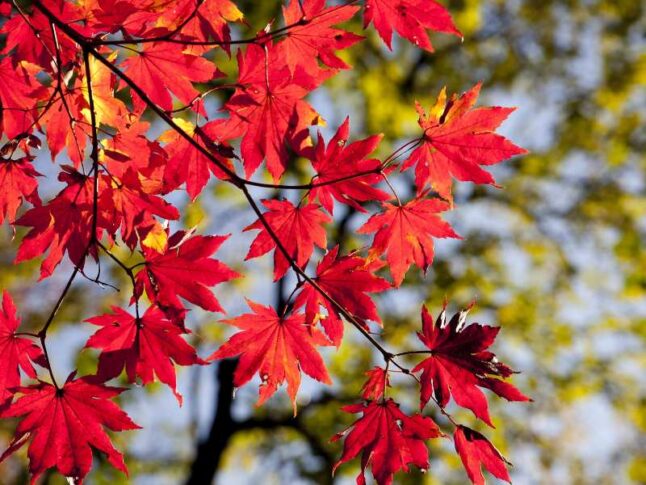
Red maple can grow up to 90 feet tall. Red flowers bloom from February to March, followed by red winged samaras. Its broad canopy makes it a great shade tree.
Red maple doesn’t need much attention once it becomes established. Just water it to get it through its first season, then leave it alone.
Plant type: Tree
USDA Hardiness Zone: 3-9
Sun: Full sun, partial shade
Soil: Chalk, clay, loam, sand
Duration: Perennial
Fragrance: Sweet cherry or almond flower scent
Bloom time: February to March
Water needs: Average
Mature height: 90 feet
Potential hazards: Toxic to horses
Maintenance: Low
Pagoda Dogwood (Cornus alternifolia)
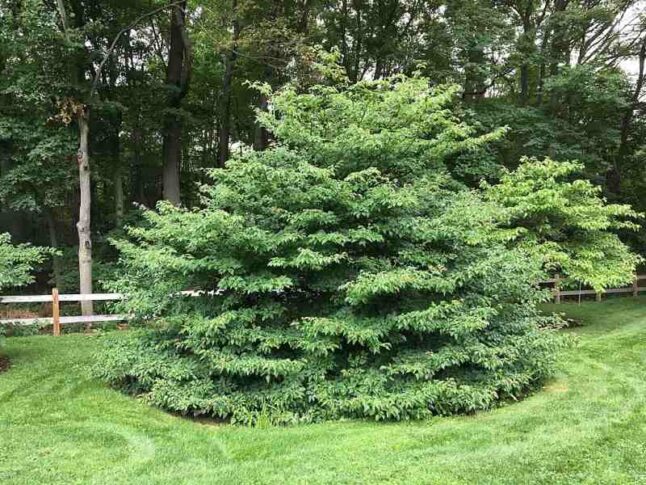
Also known as alternate-leaf dogwood, pagoda dogwood is found in dry woodlands or along stream banks. It sprouts creamy-white flowers from May to June and bluish-black fruits from July to August. Its horizontal branching pattern creates a multiple-tiered look with upturned branches, making it look like a pagoda.
Pagoda dogwood is best grown in full sun to partial shade. It has a fibrous root system and prefers cool temperatures. However, its root system keeps it from transplanting well.
Plant type: Shrub or small tree
USDA Hardiness Zone: 3-7
Sun: Full sun or partial shade
Soil: Well-drained, nutrient-rich, acidic; sandy, loamy, clay
Duration: Perennial
Fragrance: Sweet
Bloom time: Early summer
Water needs: Low; water regularly until established and then only during drought
Mature height: 12-20 ft.
Maintenance: Low
American Holly (Ilex opaca)
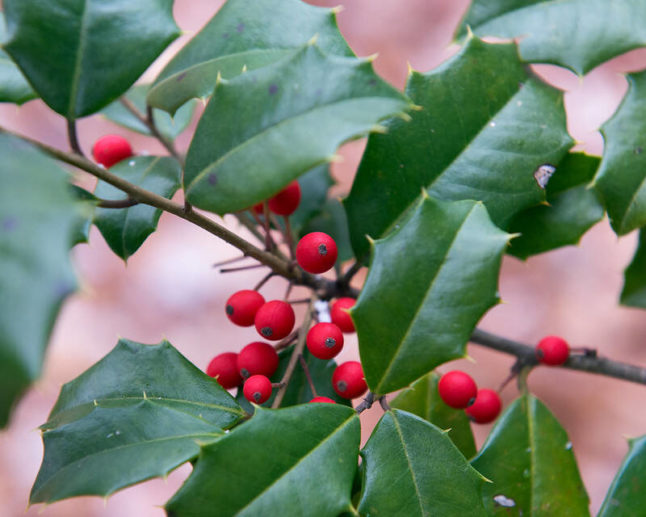
American holly is an evergreen tree that’s prevalent in rich woods and bottomlands. Females have highly fragrant leaves and fruits, providing a food source for wildlife in the fall and adding interest in winter.
This tree grows best in moist, well-drained soil in full sun to partial shade. Give the American holly afternoon shade in hot climates, but not too much or its foliage will lose density.
Plant type: Tree
USDA Hardiness Zone: 5-9
Sun: Full sun, partial shade
Soil: Chalk, clay, loam, sand. Acid, neutral. Moist but well-drained.
Duration: Evergreen perennial
Fragrance: Sweet
Bloom time: Spring and early summer
Water needs: Medium. It will occasionally tolerate wet or dry soil but not flooding. For optimum growth, avoid poorly drained soils.
Mature height: 15-30 feet. In moist regions, it can occasionally approach up to 60 feet.
Potential hazards: It may be toxic if ingested by people, cats, or dogs. Children are most vulnerable because of their curiosity and small size.
Maintenance: Low. Supplemental water may be necessary for drier sands.
Best Shrubs for Mississippi
Red Buckeye (Aesculus pavia)
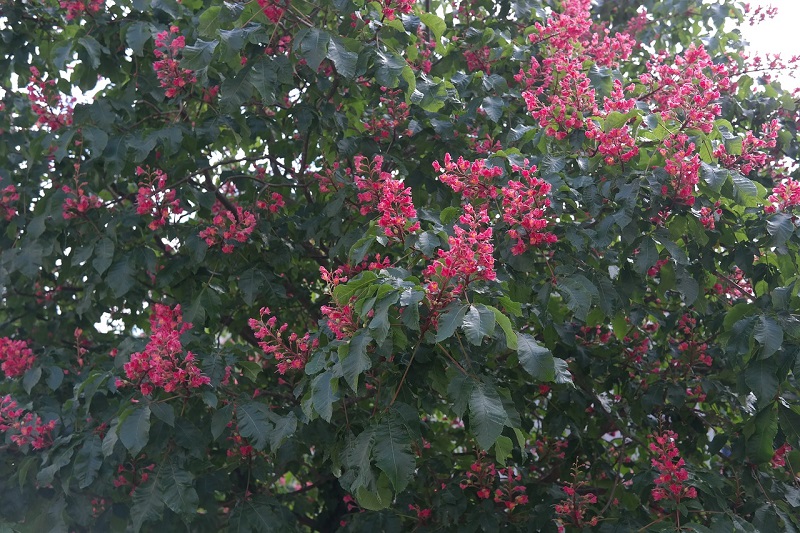
Also known as the scarlet buckeye, red buckeye is known for its clusters of red flowers that bloom in March and April and that hummingbirds and butterflies love. Following them are shiny brown seeds that squirrels love.
Red buckeye prefers partial shade in well-drained soil. Because it drops its leaves early, place it in an area with plants that will mask it.
Plant Type: Shrub
USDA Hardiness Zone: 5-9
Sun: Full to partial sun
Soil: Well-drained, tolerates a wide variety of soil types
Duration: Deciduous
Fragrance: None
Bloom Time: Mid-spring to summer
Water Needs: Low to moderate
Mature Height: 12-15 feet
Potential Hazards: Seeds, leaves, and sprouts are toxic to both humans and animals when ingested
Maintenance Needs: Low
Winterberry Holly (Ilex verticillata)
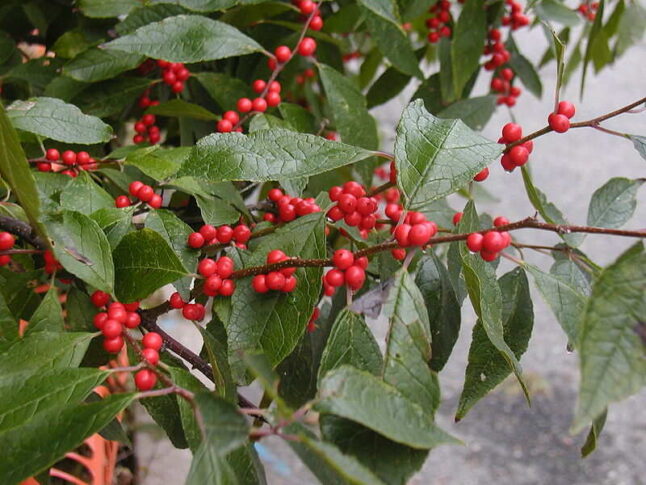
Winterberry holly is known for its red berries that mature in the fall. They provide winter interest and give birds and small mammals a food source. However, it needs to be cross-pollinated for these berries to grow.
This plant is low maintenance, but it requires moist, acidic soil with good drainage. Winterberry holly resists deer foraging, fire, and salt.
Plant type: Shrub
Hardiness zones: 3-9
Sun: Full sun to partial shade
Water needs: Medium to high
Soil: Clay, loam, sand, moist, acidic
Duration: Perennial
Mature height: 3-15 feet
Potential hazard: Might be toxic if ingested
Common Buttonbush (Cephalanthus occidentalis)
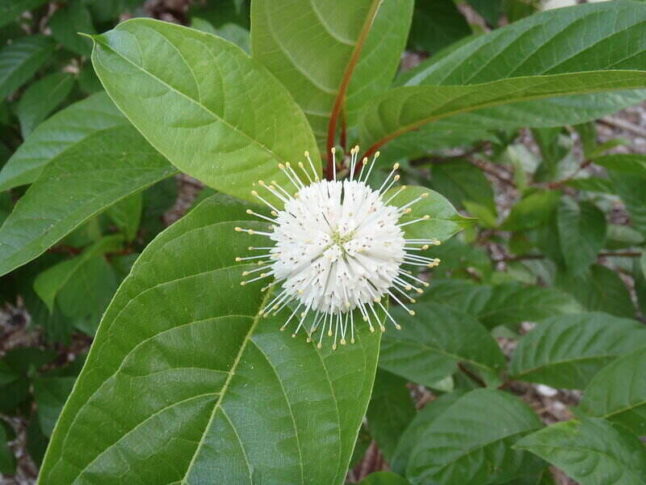
Buttonbush is found in wet soils near swamps, ponds, and lakes. It sprouts small, white, tubular flowers between June and September, which bees and butterflies love. In the fall, the flowers of the buttonbush develop reddish-brown fruits, which bird species eat.
Buttonbush attracts many different types of pollinators, waterfowl, birds, and mammals. It’s also deer, heat, and fire-resistant.
Plant type: Shrub
USDA Hardiness Zone: 5-11
Sun: Full sun, partial shade
Soil: Loam, sand
Duration: Perennial
Fragrance: Dried flowers and leaves smell like freshly-mown grass
Bloom time: June – September
Water needs: Average to high
Mature height: 5-12 feet
FAQ
What are the USDA Hardiness Zones in Mississippi?
Mississippi is in USDA Hardiness Zones 7b to 9a. 7b is in the northeastern third of the state, 8a and 8b are in the center and lower third of the state, respectively, and 9a is in the south.
What are the biggest threats to native plants?
Invasive species, habitat loss, and pesticides are the biggest threats to native plants.
Hire a Professional
A combination of shrubs, trees, flowers, and other native plants can turn your backyard into an oasis. Once you know what to get, reach out to LawnStarter and have our pros plant them for you.
Main Photo Credit: Crossvine / aecole2010 / Flickr / CC BY 2.0 DEED
